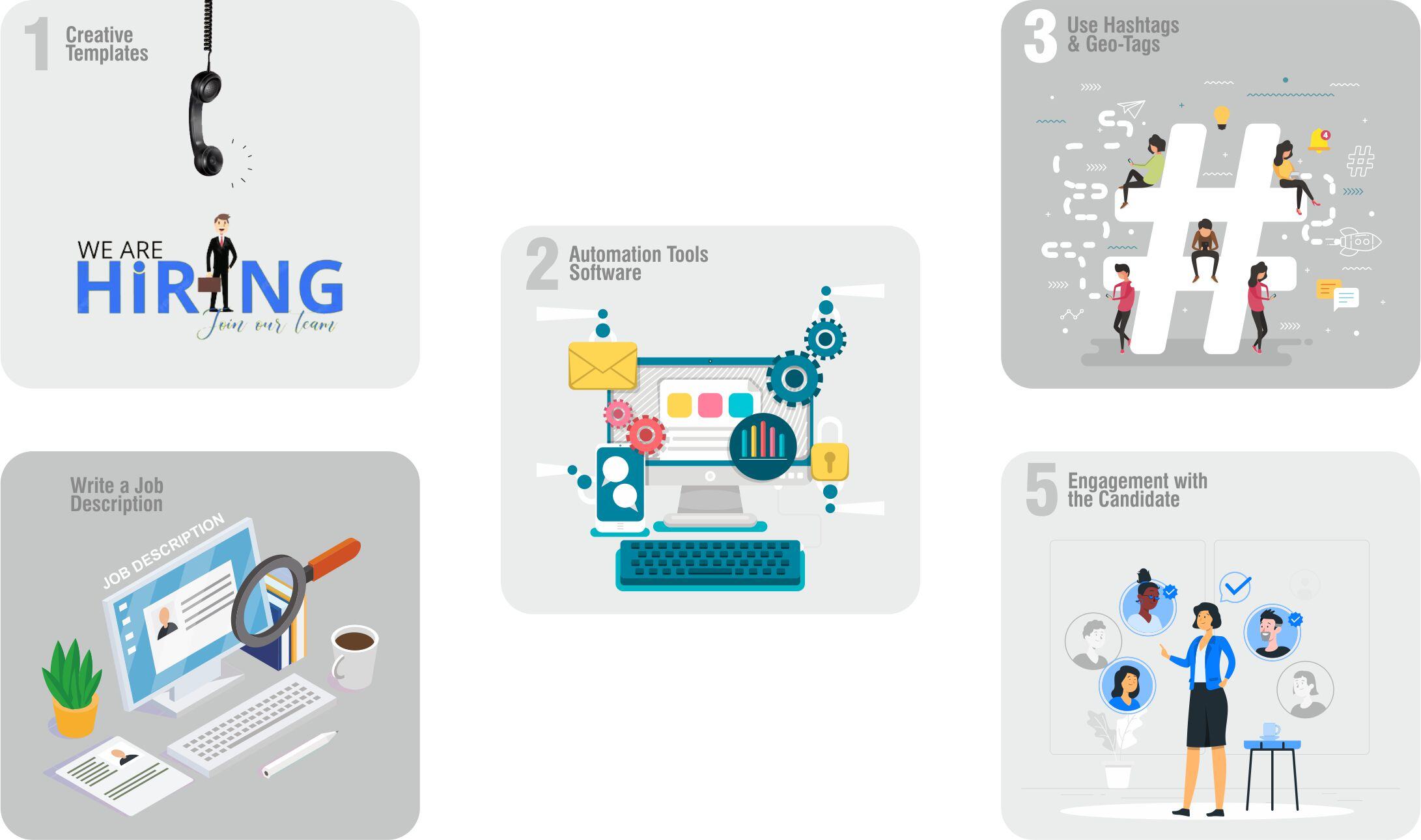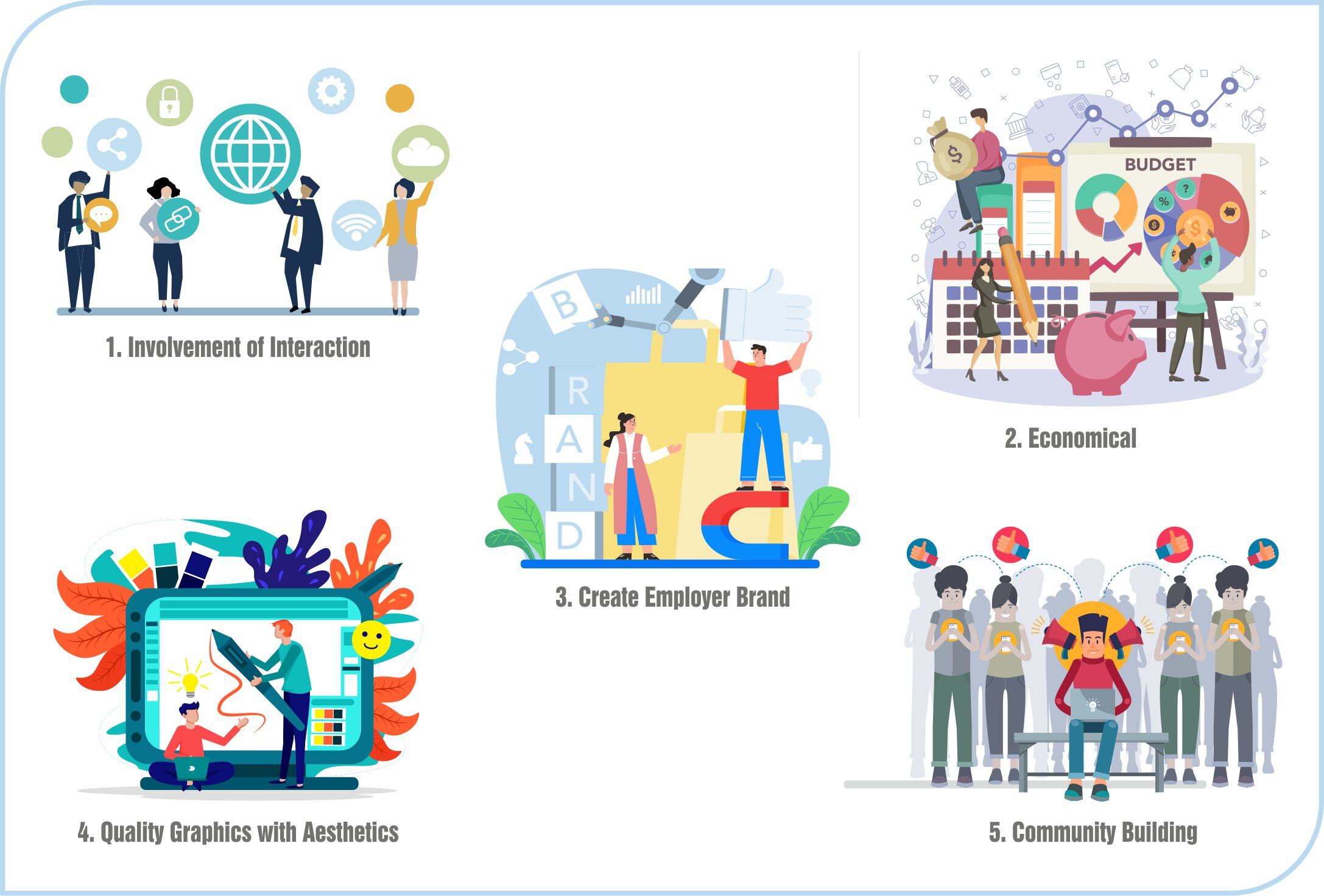
Organizations are always looking for ways to find the best and brightest employees. Social media has become a goldmine for recruitment. Platforms like LinkedIn, Facebook, Twitter, and Instagram connect you with billions of users, many of whom are skilled professionals on the hunt for new opportunities.
Two platforms stand out as clear leaders: LinkedIn and Facebook. According to Content Stadium, a whopping 78% of recruitment teams who utilize social media for communication purposes turn to LinkedIn, while Facebook follows closely behind at 65%. Other platforms like Instagram (58%), YouTube (42%), and Twitter (38%) see significant adoption as well, but they trail behind the dominance of LinkedIn and Facebook in the social recruiting landscape.
This blog dives deep into how we can turn social media into a talent acquisition strategy for your organization so that you can attract the best talent.
Why Social Media Makes Hiring Easier?

Being able to advertise your open positions to a massive audience, all for free (or at least, at a much lower cost than traditional methods) is the magic of social media recruiting. Here’s why it’s a game-changer:
-
Huge Reach: Forget limitations. Social media lets you cast a wide net and connect with potential candidates from all corners of the globe.
-
Cost-Effective: Social media recruiting is a budget-friendly option compared to expensive job boards or advertising agencies.
-
Building Your Brand: Social media gives you a platform to showcase your company culture, values, and mission. This can attract top talent who are looking for a good fit, not just a job.
Advantages of Using Social Media for Recruitment
-
Involvement of Interaction: Interaction plays the most important role in connecting with potential candidates and can be a better approach to delivering more personalized content through social media, providing a channel to interact with them directly.
-
Economical: Social media recruiting can be an alternative to other methods because it is economical, cheap, and a faster alternative to traditional advertising. Through social media, recruiting reach can be expanded.
-
Create Employer Brand: A strong employer brand is necessary to attract top talent. It’s so much easier to post job openings through its company page, and it shows off the company’s culture, mission, vision, and values.
-
Quality Graphics with Aesthetics: Social media platforms provide quality graphics with smooth aesthetics. Investment in quality graphics with a uniform color scheme running through every social media network will increase brand royalty. Canva and Adobe Photoshop are great examples of visual graphic platforms that are used for the creative aspect of creating visually appealing posts.
-
Community Building: It is important for keeping a business society functional and healthy. With the help of consistent posting of interesting content such as behind-the-scenes, employee and client testimonials, company events, and achievements updates, organizations can build a strong online community. This provides a professional, consistent, and uniform interaction with potential candidates.
How Can You Use These Platforms for Talent Acquisition?

Using social media platforms for talent acquisition is a big challenge, but here are some creative and innovative ways, according to the company’s needs and wants, that will help you establish your base as an employer:
-
Creative Templates: You can use Canva to manipulate templates for job announcements. Your information will be professionally done and very pretty, if you so wish. You could use such templates to inform them about job details, requirements, and benefits for your organization.
-
Automation Tools/Software: You might consider looking for social media automation tools to preschedule your posts and monitor the interactions. This keeps an appearance regular without being present every day.
-
Use Hashtags and Geo-Tags: Make sure you attach every job post with the proper hashtags and location tags. For instance, you may add #NowHiring, #JobOpening, or hashtags relevant to industries that will make your post relevant and more on target.
-
Write a Job Description: Write a good job description; make it clear who you are and what the role is, in alignment with the mission and vision of the company. Potential candidates should be able to know how the job will be aligned with their career goals and objectives.
-
Engagement with the Candidates: One thing may not seem like much but responding on time to comments or messages can create a lot of difference. They want to remain connected with production even if it is just at a more professional level as to the time factor. Interaction with potential candidates also helps organizations to customize their innovative ideas as per the needs of social media.
Social media is no longer just a place to connect with friends and family. It’s a powerful tool that can transform your hiring process. By implementing the strategies and tips outlined above, you can use social media to build a strong employer brand, attract top talent, and streamline your recruitment process. So, ditch the traditional methods and get ready to discover the hidden gems waiting to be found on social media!
Let Premier Staffing Solution Help

Premier Staffing Solution is a leading staffing agency dedicated to helping companies find the best talent. We understand the power of social media for recruitment and can help you develop a customized social media recruiting strategy to achieve your hiring goals. Contact us today to learn more about our services and how we can help you build a successful recruitment strategy using social media.
Note: Premier Staffing Solution cannot and does not provide legal advice. It’s important to consult with qualified counsel before adopting any new policies. It’s also your responsibility to determine whether a legal review of the work product is necessary before implementation.





